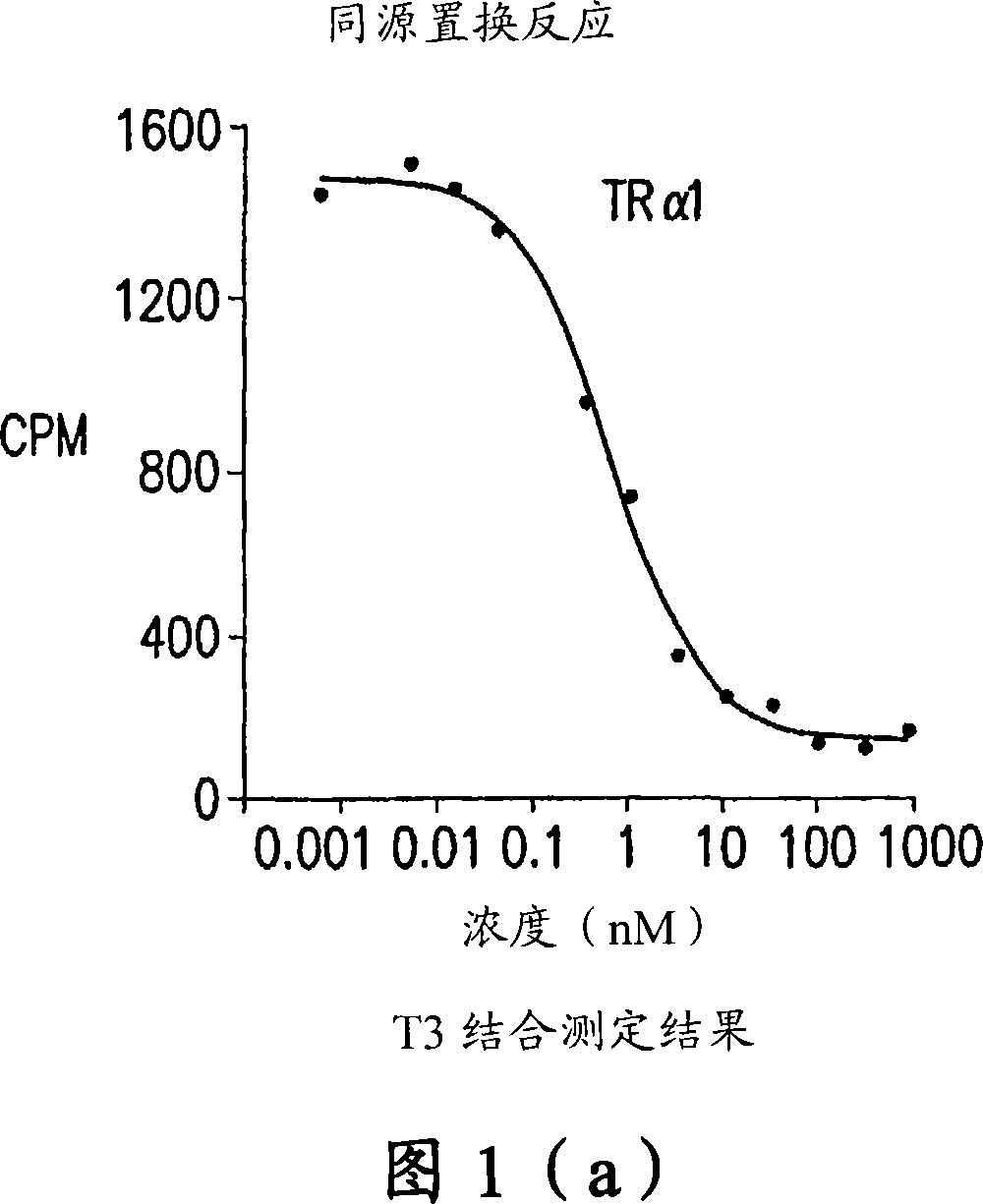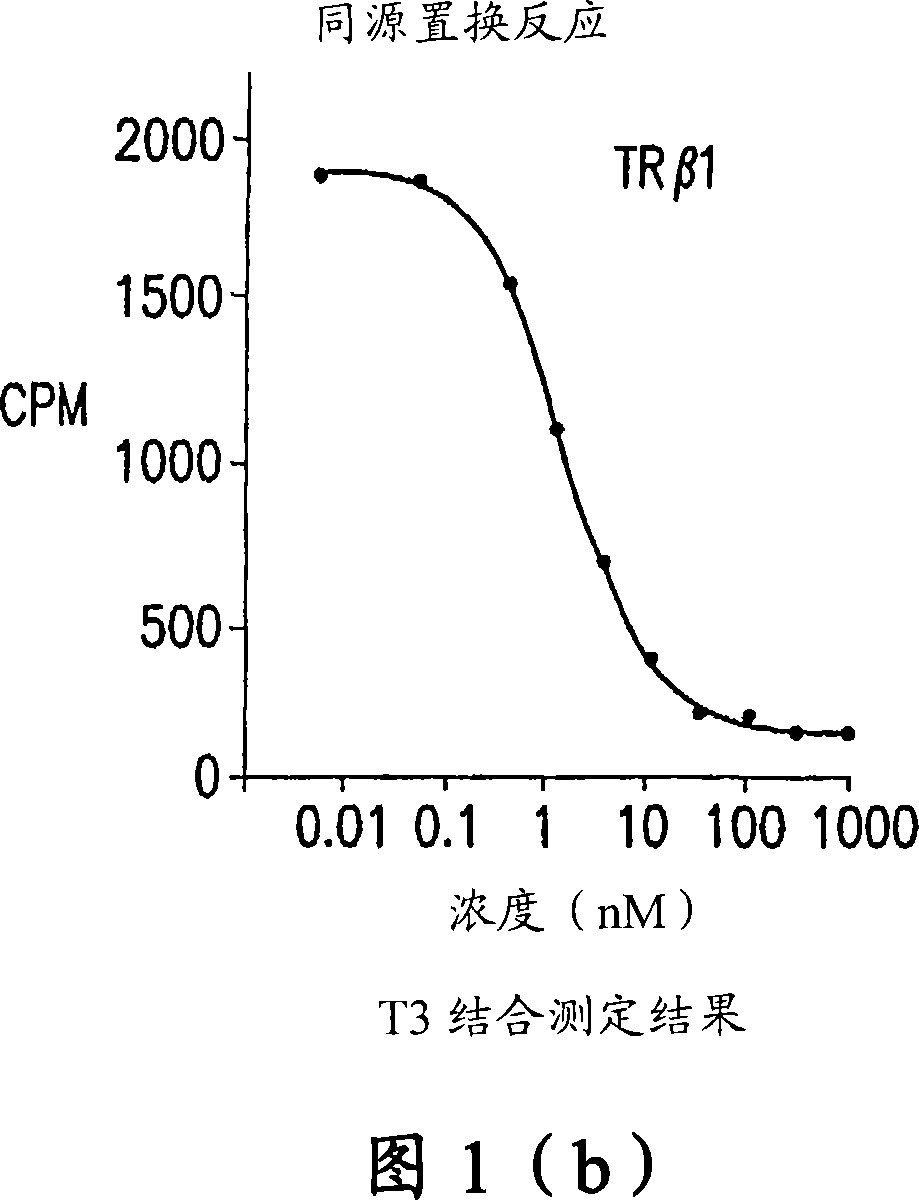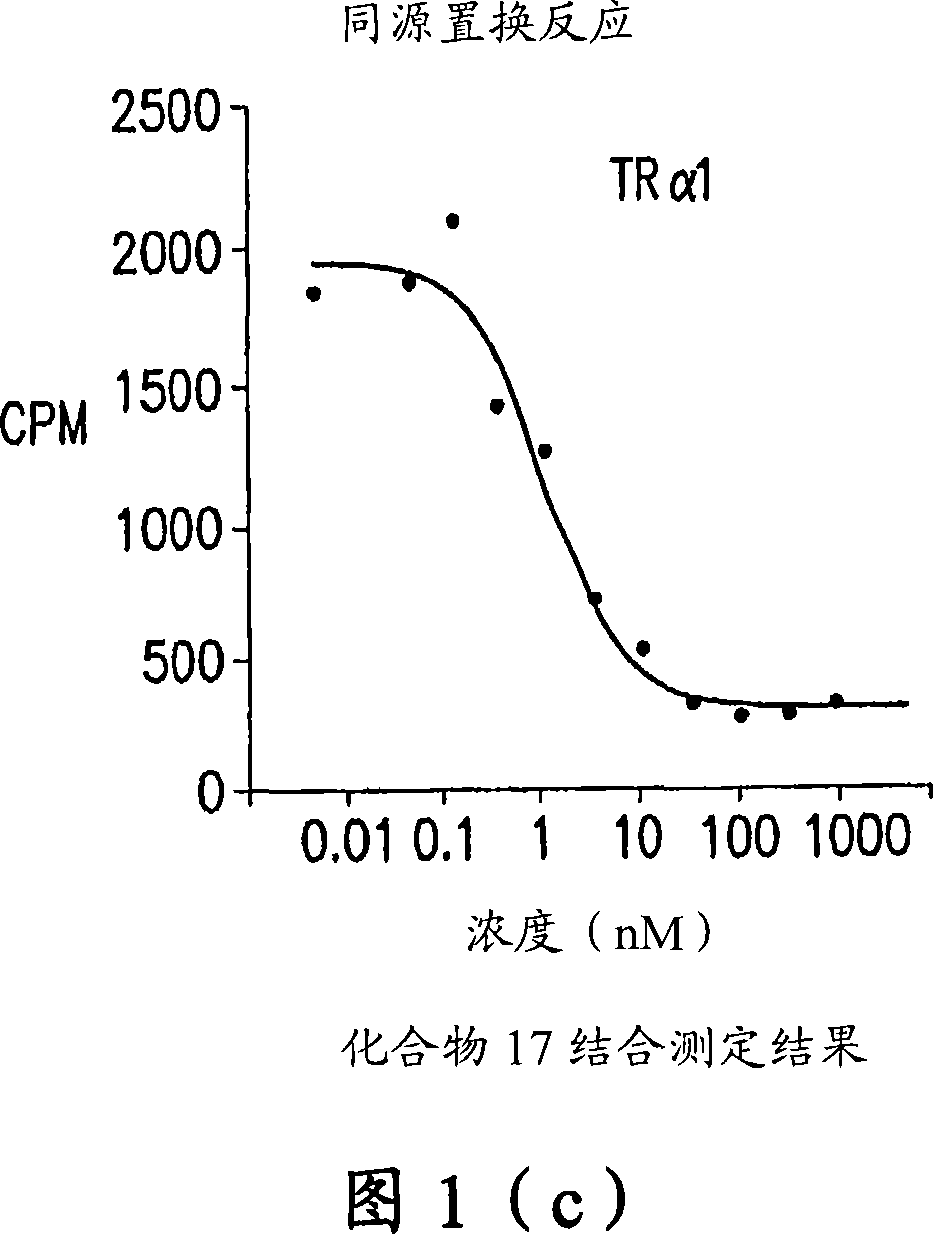Novel phosphorus-containing thyromimetics
A pharmaceutical, prodrug technology, applied in the field of new phosphorus-containing thyromimetic drugs, which can solve the problems of limited therapeutic application, increased heart organ weight, increased protein synthesis, etc.
- Summary
- Abstract
- Description
- Claims
- Application Information
AI Technical Summary
Problems solved by technology
Method used
Image
Examples
preparation example Construction
[1293] Preparation of phosphonate prodrugs
[1294] Prodrugs can be introduced at various stages of synthesis. Most often, these prodrugs are prepared from phosphonic acids of formula I due to their stability.
[1295] Phosphonic acids of formula I can be alkylated with electrophiles such as alkyl halides and alkyl sulfonates under nucleophilic substitution conditions to give phosphonates. For example, where YR 11 Compounds of formulae I-VII of the formula acyloxyalkyl group can be in a suitable solvent such as DMF (J. Med Chem. 37: 1875 (1994)) in a suitable base (eg, pyridine, TEA, diisopropyl Direct alkylation of compounds of formulae I-VII with appropriate acyloxyalkyl halides (eg, Cl, Br, I; Phosphorus Sulfur, 54:143 (1990); Synthesis 62 (1988)) in the presence of ethylamine) Prepare. The carboxylate moieties of these acyloxyalkyl halides include, but are not limited to, acetates, propionates, isobutyrates, valerates, benzoates, carbonates and other carboxylates.
[...
Embodiment 1
[1411] Compound 1: N-[3,5-Dimethyl-4-(3'-isopropyl-4'-hydroxyphenoxy)]carbamoylphosphonic acid
[1412]
[1413] Step a:
[1414] 3,5-Dimethyl-4-(3'-isopropyl-4'-methoxyphenoxy)aniline (J.Med.Chem.38: A mixture of 695 (1995), 0.1 g, 0.35 mmol) and diphosgene (0.04 g, 0.19 mmol) was heated at 60 °C for 3 h.
[1415] The reaction mixture was cooled to room temperature and the solvent was removed under reduced pressure. To the residue was added a solution of diethyl phosphinate (0.06 g, 0.42 mmol) in hexanes (1.0 mL, 3 drops of triethylamine were added) and the reaction mixture was heated at reflux for 3 h. The reaction mixture was cooled to room temperature and the solvent was removed under reduced pressure. The crude product was purified by column chromatography on silica gel eluting with ethyl acetate-hexane (1:3) to give diethyl phosphonate as an oil (0.1 g, 64%): 1 H NMR (300MHz, CDCl 3 ): δ8.44(s, 1H), 7.17(s, 2H), 6.10-6.60(m, 3H), 4.10(m, 4H), 3.58(s, 3H), 3.07(m,...
Embodiment 2
[1419] Compound 2: 1-Amino-2-[3,5-diiodo-4-(4'-hydroxy-3'-iodophenoxy)phenyl]ethylphosphonic acid
[1420]
[1421] Step a:
[1422] To a solution of 4-benzyloxyphenylacetyl chloride (4.0 g, 16.2 mmol) in THF (10.0 mL) was slowly added triethyl phosphinate (3.33 mL, 19.5 mmol) at room temperature. The reaction mixture was stirred at room temperature for 16 h and the solvent was removed under reduced pressure. The residue was treated with hexane (20 mL) and the mixture was filtered. The white solid was collected and air dried. The solid was dissolved in pyridine (25.0 mL) and hydroxylamine hydrochloride (1.96 g, 28 mmol) was added. The reaction mixture was stirred at room temperature for 72 h and the solvent was removed under reduced pressure. The crude product was purified by column chromatography on silica gel eluting with ethyl acetate-hexane (7:3) to give 2-(4-benzyloxyphenyl)-1-( as a colorless oil Diethyl hydroxyimino)ethylphosphonate (5.2 g, 85%): 1 H NMR (300MH...
PUM
 Login to View More
Login to View More Abstract
Description
Claims
Application Information
 Login to View More
Login to View More - R&D
- Intellectual Property
- Life Sciences
- Materials
- Tech Scout
- Unparalleled Data Quality
- Higher Quality Content
- 60% Fewer Hallucinations
Browse by: Latest US Patents, China's latest patents, Technical Efficacy Thesaurus, Application Domain, Technology Topic, Popular Technical Reports.
© 2025 PatSnap. All rights reserved.Legal|Privacy policy|Modern Slavery Act Transparency Statement|Sitemap|About US| Contact US: help@patsnap.com



